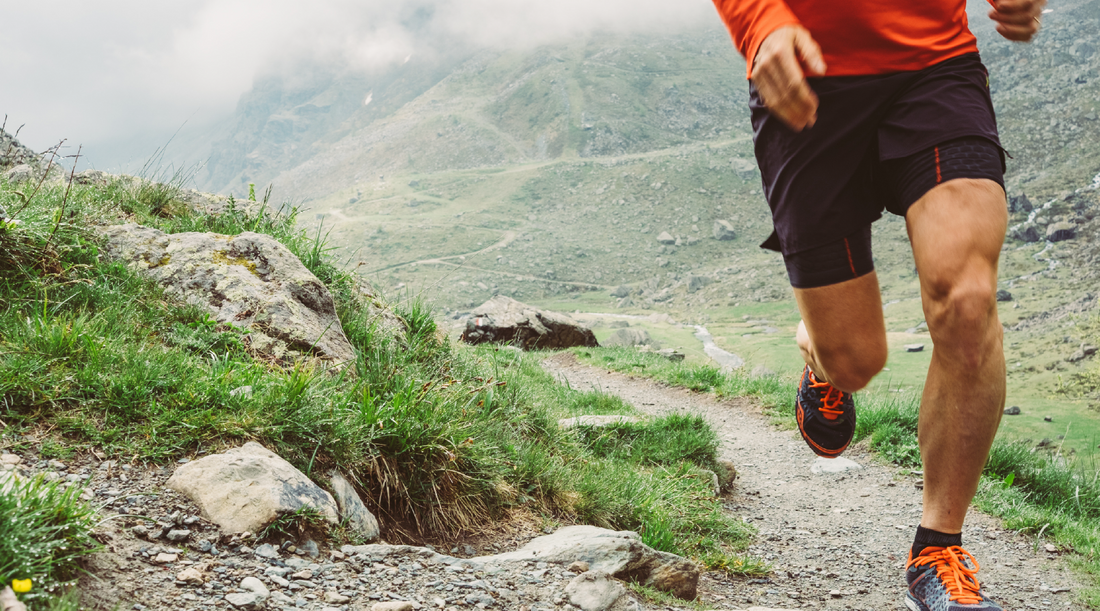
Understanding Runner's Knee: Causes, Symptoms & Treatment of Patellofemoral Syndrome
Share
Jump to section:
What does runner's knee feel like?
What causes runner's knee?
How is runner's knee treated?
Can runner's knee be prevented?
What is runner's knee?
Running injuries can impact anyone, from seasoned runners who push themselves, to newbies with unaccustomed muscles.
No matter what kind of injury you have, it's crucial to pay attention to your body. Avoid running if you're experiencing pain, and resume running only once you've sufficiently recovered.
Runner's knee, also known as patellofemoral pain (PFP), means that you have pain in front of the knee or around the kneecap (patella). This is where the knee connects with the lower end of the thighbone (femur).
What does runner's knee feel like?
During your run, you may develop pain at the front of the knee, around the knee or behind the kneecap. The pain may be dull, or it could be sharp.
These are the most common symptoms of runner's knee:
- Discomfort in and around the kneecap during physical activity.
- If you experience pain after sitting for a long time with your knees bent, you may also notice feelings of weakness or instability.
- Hear or feel a rubbing, grinding, or clicking sound from your kneecap when you bend and straighten your knee
- Tender kneecap
If you're experiencing symptoms similar to runner's knee, it's important to consult your GP or physio for an accurate diagnosis.
What causes runner's knee?
Runner’s knee pain can result from soft tissue irritation, worn or torn cartilage, or strained tendons. These factors can all contribute to runner’s knee:
- overuse
- trauma to the kneecap
- misalignment of the kneecap
- complete or partial dislocation of the kneecap
- flat feet
- weak or tight thigh muscles
- inadequate stretching before exercise
- arthritis
- a fractured kneecap
- plica syndrome or synovial plica syndrome, in which the lining of the joint becomes thickened and inflamed
In some cases, pain begins in the back or hip and is transmitted to the knee. This is known as “referred pain.”
How is runner's knee treated?
Your doctor will tailor your treatment to the underlying cause, but in most cases, runner’s knee can be successfully treated without surgery. Most often, the first step in treatment is to practice RICE:
| Area | Summary | Products |
| Rest | Avoid repetitive stress on the knee | |
| Ice | To reduce pain and swelling, apply an ice pack or a package of frozen peas to the knee for up to 30 minutes at a time and avoid any heat to the knee. | |
| Compression |
Patella Knee Strap Use a patella knee to deliver just the right amount of support to stabilize the kneecap during physical activity. Worn just below the patella, the straps control the effects of muscular vibration during repetitive impact to reduce fatigue. When muscles are overworked, your chance of injury increases. Compression Knee Support Sleeves help minimize pain and swelling when there is a build-up of fluid in the joints from excessive pressure and stress. Assists in recovery by regulating blood flow and maintaining muscle warmth. |
Patella Knee Strap (From £6.99) |
| Elevation | Place a pillow under your knee when sitting or lying down to prevent further swelling. When there is significant swelling, keep the foot elevated above the knee and the knee above the level of the heart. |
Product Bundles:
Runner's Knee Pain Relief
If you need additional pain relief, you can take certain over-the-counter nonsteroidal anti-inflammatory medications (NSAIDs), such as aspirin, ibuprofen, and naproxen. Acetaminophen, the active ingredient found in Tylenol, can also help. You may want to talk to your doctor before taking these medicines, especially if you have other health conditions or take other prescription medications.
Can runner's knee be prevented?
Preventing runner’s knee includes not overstressing your knees. You can do this by:
- Stay in shape. Make sure your overall health and conditioning are good. If you’re overweight, speak with your doctor about creating a weight loss plan.
- Stretch. Do a five-minute warmup followed by stretching exercises before you run or perform any activity that stresses the knee. Your doctor can show you exercises to increase your knee’s flexibility and to prevent irritation.
- Gradually increase training. Never abruptly increase the intensity of your workout. Instead, make changes incrementally.
- Use proper running shoes. Buy quality shoes with good shock absorption, and make sure they fit properly and comfortably. Don’t run in shoes that are too worn. Wear orthotics if you have flat feet.
- Use proper running form. Keep a tight core to prevent yourself from leaning too far forward or backward, and keep your knees bent. Try to run on a soft, smooth surface. Avoid running on concrete. Walk or run in a zigzag pattern when going down a steep incline.
Key points about runner's knee
- Runner's knee is dull pain around the front of the knee.
- It may be caused by a structural defect, or a certain way of walking or running.
- Symptoms include pain, and rubbing, grinding, or clicking sound of the kneecap.
- Treatment includes not running until the pain goes away. Also using cold packs, compression, and elevation may help. Medicine such as ibuprofen can lessen pain and reduce inflammation. Stretching and strengthening exercises can help prevent runner’s knee.





